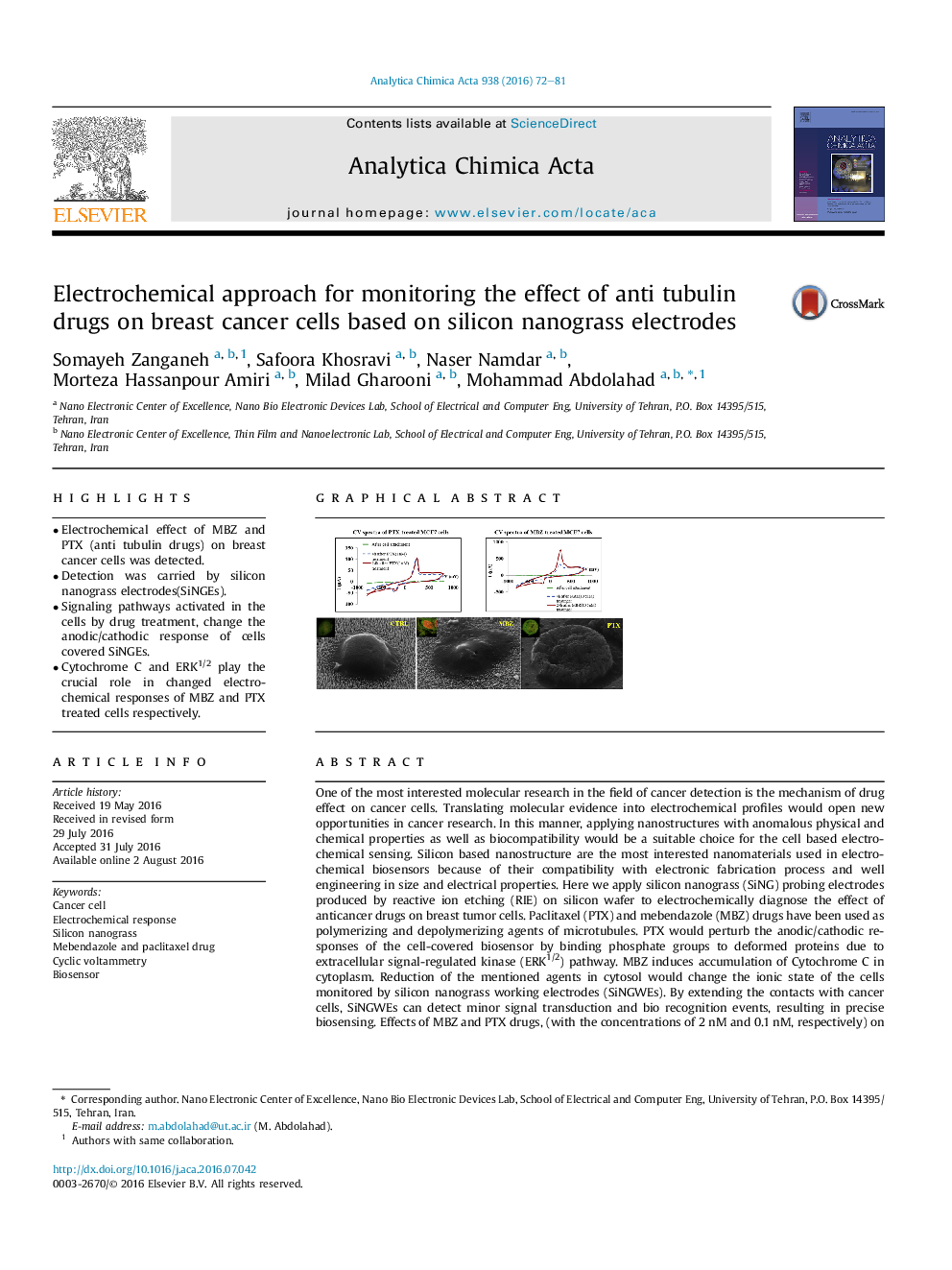| Article ID | Journal | Published Year | Pages | File Type |
|---|---|---|---|---|
| 5131396 | Analytica Chimica Acta | 2016 | 10 Pages |
â¢Electrochemical effect of MBZ and PTX (anti tubulin drugs) on breast cancer cells was detected.â¢Detection was carried by silicon nanograss electrodes(SiNGEs).â¢Signaling pathways activated in the cells by drug treatment, change the anodic/cathodic response of cells covered SiNGEs.â¢Cytochrome C and ERK1/2 play the crucial role in changed electrochemical responses of MBZ and PTX treated cells respectively.
One of the most interested molecular research in the field of cancer detection is the mechanism of drug effect on cancer cells. Translating molecular evidence into electrochemical profiles would open new opportunities in cancer research. In this manner, applying nanostructures with anomalous physical and chemical properties as well as biocompatibility would be a suitable choice for the cell based electrochemical sensing. Silicon based nanostructure are the most interested nanomaterials used in electrochemical biosensors because of their compatibility with electronic fabrication process and well engineering in size and electrical properties. Here we apply silicon nanograss (SiNG) probing electrodes produced by reactive ion etching (RIE) on silicon wafer to electrochemically diagnose the effect of anticancer drugs on breast tumor cells. Paclitaxel (PTX) and mebendazole (MBZ) drugs have been used as polymerizing and depolymerizing agents of microtubules. PTX would perturb the anodic/cathodic responses of the cell-covered biosensor by binding phosphate groups to deformed proteins due to extracellular signal-regulated kinase (ERK1/2) pathway. MBZ induces accumulation of Cytochrome C in cytoplasm. Reduction of the mentioned agents in cytosol would change the ionic state of the cells monitored by silicon nanograss working electrodes (SiNGWEs). By extending the contacts with cancer cells, SiNGWEs can detect minor signal transduction and bio recognition events, resulting in precise biosensing. Effects of MBZ and PTX drugs, (with the concentrations of 2Â nM and 0.1Â nM, respectively) on electrochemical activity of MCF-7Â cells are successfully recorded which are corroborated by confocal and flow cytometry assays.
Graphical abstractDownload full-size image
